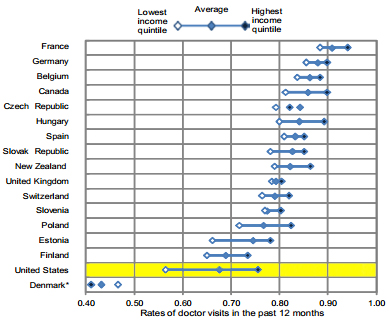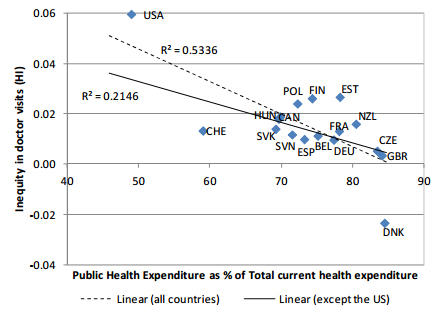July 20, 2012
The figure below from the report shows the distribution of doctor vists in the previous 12 months across income quintiles, adjusted for need. The U.S. shows up at the bottom as the most unequal, that is, the between difference in visits between those in the highest-income quintile and those in the lowest one (Denmark’s numbers are based on a different survey recall period, so OECD warns that they’re not comparable to the rest).

The chart below, also from the report, shows the relationship between health inequity and the share of health expenditures that are public ones. Especially with the U.S. in the mix, as public expenditures increase as a share of total expenditures, inequity in doctor visits declines.

All in all, just one more reason to make all states implement the Affordable Care Act’s provision extending Medicaid eligibility to all Americans with incomes below 133 percent of the poverty line.






